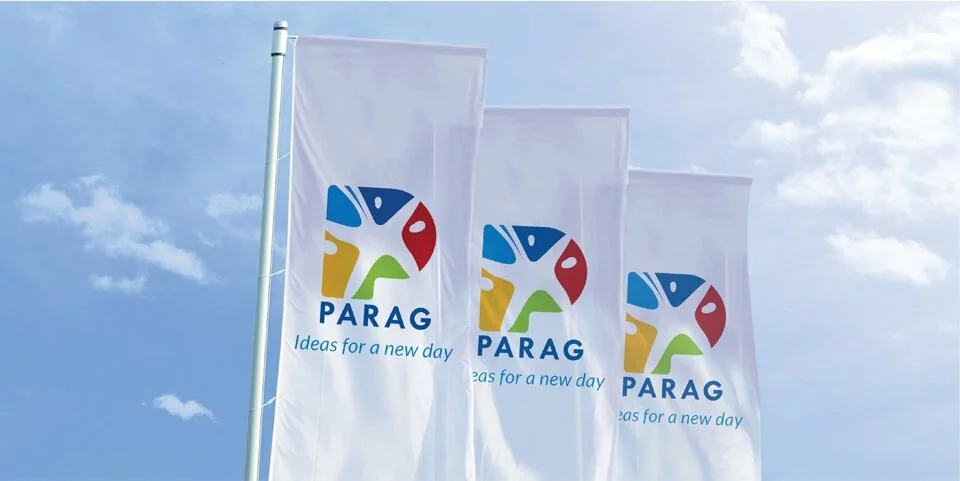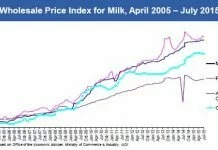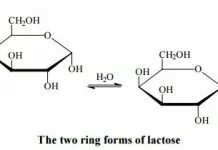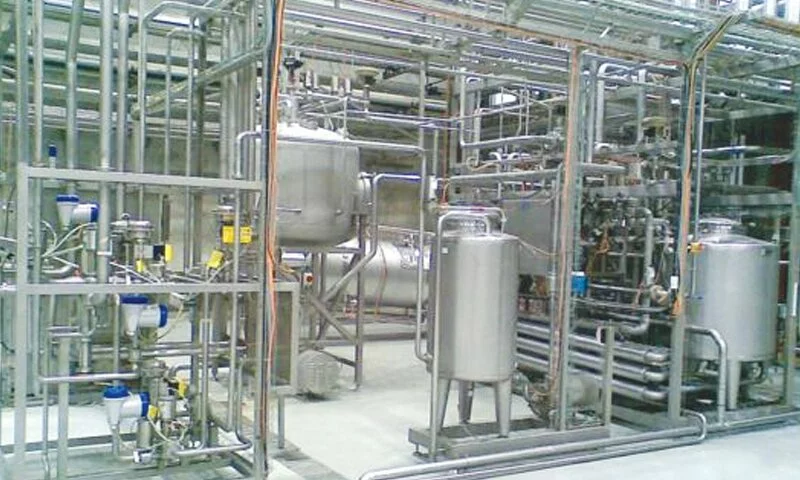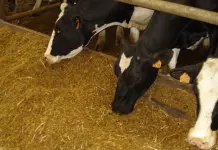Pan-India Milk Marketing and Why it was Essential
As I have mentioned earlier in my blog posts, milk producers of Kaira district in Gujarat, were forced to go on milk strike for over 15 days because the British denied them registration of their cooperative union. The milk producers were demanding from the British government, that it strike down monopoly rights for purchase of milk, granted to Polson Dairy and that the then Bombay State buy milk for Mumbai market directly from their cooperative. In view of this milk strike, the British government relented and allowed the milk union to register as a cooperative. The then Bombay State also relented and started milk procurement from Amul directly.
Since then Amul used to supply milk to Mumbai market. During the initial days of this arrangement, milk was sent chilled in cans loaded in insulated Railway wagons. Thereafter when new dairy plant was built in 1956 – the AMUL dairy, which included a railway siding and used insulated rail milk tankers to transport milk to Mumbai. This was not only more economical but milk tankers reached to Mumbai in matter of hours and on time – ensuring that the Quality of milk was also well preserved.
Dr. Kurien used this experience and under Operation Flood program, he scaled up the operation by getting several such rail milk tankers manufactured and inducted for pan India milk movement by rail. He strategized to transport huge volumes of milk from Anand to Delhi and to Kolkata and also from many other local dairies to metro markets. In doing so he provided market access to rural milk producers in the most reliable and economical way. This supply chain mechanism served as a ‘cold chain’.
Subsequently the milk production within state of Maharashtra went up and given the capacity limitations & various commercial considerations, the Greater Bombay Milk Scheme slowly stopped purchasing milk from dairies in Gujarat. In light of this fact, Amul opened markets such as Delhi and Kolkata by supplying fresh milk transported via rail. In early 80s Amul launched milk in tetra-pack in Mumbai market, it met with some success but not as expected.
To recapture the Mumbai market-share, in 1992 Amul decided to market milk procured from Surat region in Mumbai. This time around, the milk was sold in pouches by getting it contract-packed and distributed through a manufacturing subsidiary. This was done in such a way that interests of local dairy cooperatives were protected. For example retail and distributor margins were kept the same. Even consumer price was either equal or kept higher than local dairy produce to avoid unhealthy competition.
When Britannia and Mother Dairy launched milk in Mumbai, Amul decided to go aggressively and emerge no.1 milk brand in Mumbai and Maharashtra. By this time, Amul had also started purchasing milk from Maharashtra dairy cooperatives at a price equal to local state federation or higher. This in turn helped Maharashtra dairy cooperatives in getting better prices and kept the competitors on toe.
The AMUL brand was created as an identity, a bridge between farmers and consumers by the Kaira milk union in 1956. Later when the Mehsana milk union came into existence, Kaira union permitted Mehsana to manufacture products in the Amul portfolio – such as Amulspray milk powder and Butter at a token royalty of 1%, which was essentially spent on further brand building. Later when many more milk unions were established, Dr. Kurien proposed creation of the Gujarat Cooperative Milk Marketing Federation. Government of Gujarat nominated the board for a ten year period and also nominated Dr. Kurien as its Chairman cum Managing Director.
In my opinion, the decision to form a state level Marketing federation in 1974 was a very courageous decision. To realize the need to create a common marketing federation and build it into top class marketing institution over several decades was a full of risk but was worth as well for economic freedom of farmers. Initially there were six member unions, and this number has steadily increased with the success of GCMMF now standing at 15. All these unions and GCMMF are permitted to use the brand AMUL by Kaira milk union; which is the founding union, at a token royalty of Rs. 1. The responsibility of brand management and quality protection has been entrusted with GCMMF through an agreement, which has stood the test of time.
In this arrangement, the direct beneficiaries of a unified are all milk producers of Gujarat. GCMMF has offices all over India and extensive distribution network capable to take on any competition. This is formidable advantage for otherwise small-scale milk producers of the state of Gujarat.
The next logical step for Amul was make itself available as a unifying brand for the benefit of milk producers of the rest of India. To do so it was necessary to capture prime milk markets of this country, and create processing facilities i.e. not only sell milk but also value added products by procuring milk from local dairy cooperatives of that region, often at better prices then local private or government dairies. In this process, we started learning processes that enable us to ultimately capture market for milk and fresh products faster than competition. For example, Britannia had launched milk in Mumbai, Delhi and Kolkata. Metro dairy Kolkata was becoming more powerful and Chitale dairy was emerging stronger in pune. Paras was becoming stronger in Delhi and Dinshaw in Nagpur.
To keep these competitors in check, and protect local markets for local producers, GCMMF launched milk under the AMUL brand in Delhi in 2003, Kolkata in 2005 and subsequently in cities of Kanpur, Lucknow, Pune, Nagpur, Raipur, Udaipur, Jaipur, Ajmer, Jodhpur, Indore, Bhopal etc.
This goal was well linked to other projects of national importance. Take for example the advent of National Quadrilateral Highway Project, which meant that it would be possible to transport milk by road to farther distances rapidly and at a lower cost. There are two options to transport milk. One option is to convert milk into powder, which used to cost around Rs. 2 per liter or less. But this option requires storing milk powder for months to realize the right prices. We were thus required to invest in a milk drying plant and also in carrying cost of milk powder. Add to this the risk accompanied with impact of huge inventories on the market.
Given so much capital lock-up and high-risk element, we preferred the second option – to transport fresh milk in tankers. Considering with 4 lane highway network, bigger & more efficient milk tankers, it is better to transport fresh milk and establish product manufacturing units in metros like Mumbai, Delhi, Kolkata. In this way Amul can market fresh milk as well as fresh products like Dahi, Buttermilk, Icecreams, Yogurts from these units. By avoiding conversion of milk into powder, we reduced the risk, improved quality, eliminated middlemen and lowered overall costs in marketing milk across the country.
We therefore did not build many more powder plants other than what is needed and instead decided to invest in fresh milk & product processing plants. Our goal was to launch milk in major market and capture a commanding share, making Amul the number 1 brand of milk, overtaking competitors in metros such as Mumbai, Delhi, Kolkata.
Once we had such a market share and consumer base, we would provide the benefit of brand Amul to milk producers outside Gujarat and ensure better prices to local milk producers. In this direction we started buying milk, almost over 4 lac liters per day from local dairy cooperatives of Maharashtra. Similarly we started organizing farmers in West Bengal. Where people once said that there is little milk to procure, with our vision and dedication to the cause, today Amul has organized around 40 villages cooperatives outside Gujarat and collects around 1 million liters of milk per day.
The Amul brand, which was created for farmers of Kaira district has grown to represent the farmers of Gujarat and is now racing to extend its benefits and protect milk producers of remaining states of India. Amul is destined to become true protector of farmer’s interest.
Here I would like to narrate as to how this strategy impacts farmers of this country.
In New Delhi both major milk brands are government affiliated in all practical sense and other private players are relatively too small. Whenever there is a need for milk price revision the government nod; howsoever informal, was essential. And as it happens more often then not, the government would be facing a municipal election, a state assembly election, national parliament election or bye-elections. Hence in the five-year term, chances were that 2-3 years of this time frame was never a favorable time for milk price increase – while the inflation levels kept rising! Since the metro dairies would not be allowed price revision directly or indirectly, the burden of loss arising from such a decision is obviously borne by the milk producers and their cooperatives. And then; sadly, the co-operatives are blamed for ‘mismanagement’!
When Amul entered the metro markets we worked towards building a customer base and emerge as a leader. Once this was achieved, whenever milk price revision was necessary due to increase in cost of inputs, we decided to revise prices without any interference from the government. In Gujarat too, no Government ever interfered with pricing decision – which was a key reason for its success in the state and outside. We followed the same practice for marketing milk, be it Mumbai, Delhi or Kolkata!
In August 2008 we revised milk prices and the benefit of revision was passed on to cooperative dairies the very same day in full. They in turn were required to pass on the benefit to milk producers. When we revised prices in Delhi – it was the first time that the milk producer of North India was in a position to decide the price of milk produce, without prior consent of the government. This was a new beginning of true economic freedom to milk producers of North India.
And therefore, Amul decision to enter fresh milk & product markets, first by transporting their own milk by rail and road infrastructure and then start procuring milk from local producers has silently but effectively enabled all milk producers of India to receive fair prices for their milk and encouraged them to produce more milk! This has made local cooperatives improve quality and services. Private dairies too are challenged to work harder on quality enhancement and be fair to milk producers.
These efforts were not targeted towards any private dairy or Government but a mere extension of the Kaira farmers co-operative movement seeking economic freedom. A movement conceived by Sardar Patel and nurtured by Tribhuvandas and Dr. Kurien throughout their life. Luminaries, in whose presence, I have had the fortune of serving Amul for over 20 years.
I know that as professionals we are in a dilemma about increasing prices. On one hand milk producers need to be compensated for inflation and be given an incentive to encourage increased production and on the other hand, most Indian consumers are not well to do or in the middle class. We have always aimed to price milk & products most reasonably to enable this ‘India’ to consume more milk.
After a lot of thinking we believe Amul’s mission should be to see that every Indian lives a hundred years. Going by the principles of a 5000 year old civilization, this means Indians should consume more milk and milk products. Stay healthy, strong and live a hundred years. But this is applicable not only to consumers, but equally to the milk producers & farmers that they too live a hundred years.
The only way for Amul to achieve this goal and over come this dichotomy is to add maximum value at minimum cost. This is a challenge; although difficult, not impossible. We have to manage our business with the best of the professional, with least overheads, which result in unbeatable productivity.
Amul began with two village societies and 247 liters of milk in 1946. In 1994-95 after 50 years its sales reached Rs. 1,000 crore and in the year 2000 it was close to Rs. 2,000 crore. It is now on the verge of crossing Rs. 12,000 crores and has the potential to cross Rs. 100,000 crores by 2030.
Tribhuvandas had unshakeable faith in Dr. Kurien’s team and the cooperative model. During our meetings, he always said that co-operatives are bound to emerge stronger when faced with competition from outside. But he also used to warn; “We must be vigilant as cooperatives are vulnerable due to dissension from within”. The threat is not out there, its within. Amul has managed this threat over half a century and however difficult it may look, I am sure that Amul will rise to this challenge and emerge as worlds biggest dairy brand by 2030!
Hope you all have a great day and that you find inspiration in every day life.
– B M Vyas
Mr. BM Vyas took-over as Managing Director of AMUL Co-Op. during expansion and opening up of the Indian economy & globalization in the 90s. In order to take on the competition, he championed Total Quality Management across the dairy value chain in Gujarat. Within a span of 16 years at helm of AMUL, he increased sales of AMUL to eight-folds (from Rs. 9.8 billion to Rs. 80 billion). He steered AMUL to be Asia’s largest fresh Milk processor or No. 1 Dairy Brand in India as well as in Asia Pacific, as per Media Magazine Survey, 2009. Under his leadership; AMUL launched innovative and special Dietary products like Probiotic & Sugar Free Ice Cream, Probiotic buttermilk for the first time in India.
Comments
comments








